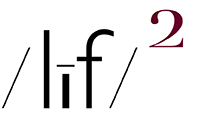In yesterday's entry I wrote about
golden hour picture making. In that I entry I wrote "there must be something other than the light to make
golden hour pictures work for me. In other words, there must be something of interest other than the light to prick my eye and sensibilities." In my
golden hour picture making I strive to do just that although what works for me may not for others.
The golden hour pictures which first pricked my eye and sensibilities - the year was 1979 - was with my acquisition of Joel Meyerwitz's book, Cape Light. To say that I was smitten by the Meyerwitz pictures would be an enormous understatement. In fact, I went right out with my 8x10 view camera and began making golden light cityscapes - I lived and had my studio in a loft building in downtown Rochester, NY.
If it were still possible to make pictures with my 8x10 + color negative film, I would do it in a NY minute. While film and processing are still available (around $25 / sheet total + shipping costs for both), there is still the matter of scanning. I have a flatbed scaner with which I can scan 8x10 film but it would mean settinng up a clean scanning room (closet?) in order to mitigate the dust problem. All of which is more work and hassle than I wish to introduce into my life at this or any other future time.
That written, why do I still pine for the good ol' days of large format color negative film? Well, to be more accurate, what I pine for is not film-based picture making, rather it is the visual quality of the resultant prints made from color negative film which have a hold on my eye and sensibilities.
Simply written - without delving into wildly misunderstand dynamic range technical matters - color negative film has the ability to record a much broader range of f-stop variance (typically 8-12 stop difference) than a digital sensor (typically 4-5 stop difference)
In practice, what this means is that in high contrast situations color negative film is much more suited to producing results which capture more detail in both the dark and highlight portions of a scene. And, contrary to digital practice where one 'protects' the highlight end of the f-stop range (at the expensive of the dark end of the f-stop range), with film the practice is to "protect" the darker values and let the highlight values be 'protected' by the greater f-stop variance capture range inherent in color negative film.
Color negative's ability to capture highlight information, even when overexposed (as often happens when "protecting" the dark values in a scene), which, unlike digital sensors which produce a ragged and abrupt clipping, rolls off in a gentle curve. The result is a print with a wealth of subtle gradiated highlight detail together with velvety rich shadow detail.
Nothing in the digital picture making world has yet to equal that combination in a single exposure manner.
My decades of experience working with color negative film has resulted in my ability to recogniz a print made from color negative film from a mile away. And, when a high-craft print made from color negative film hits my eye like a big pizza pie, that's amore.
